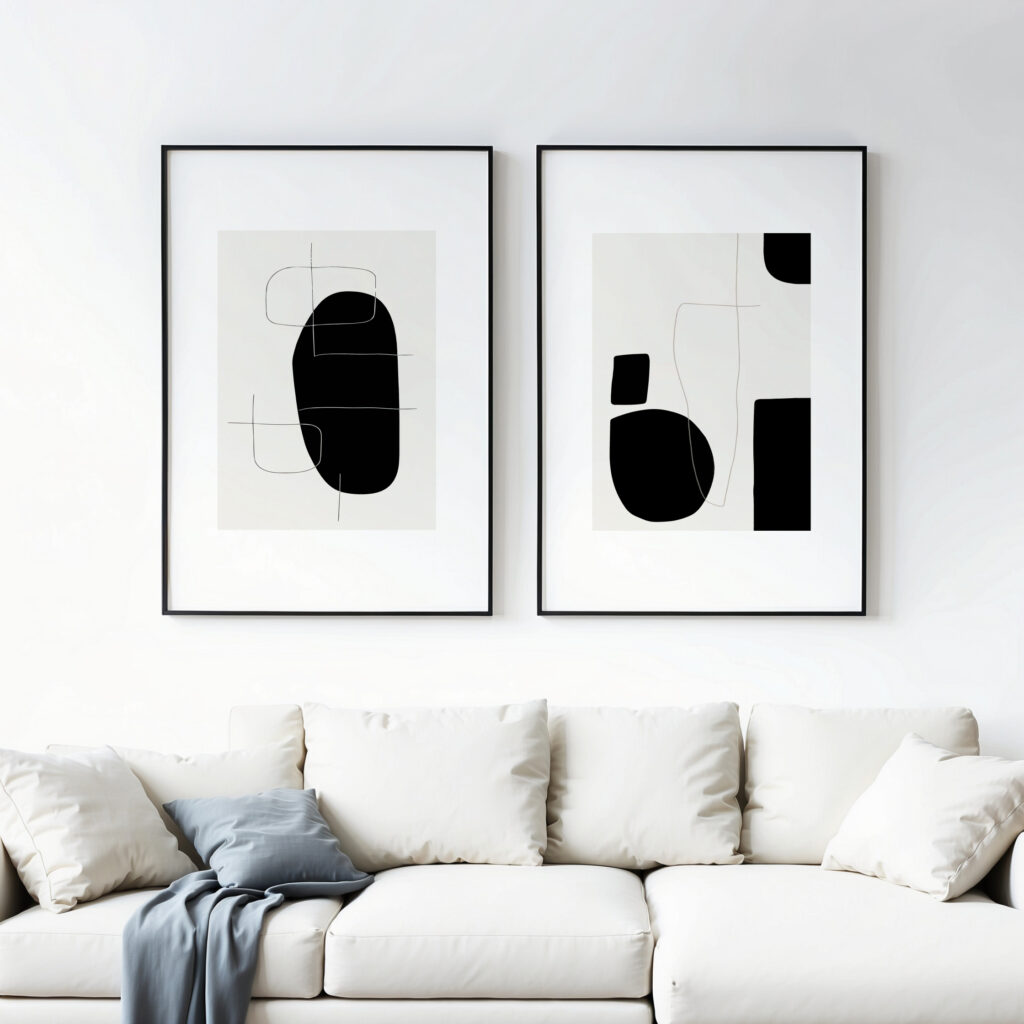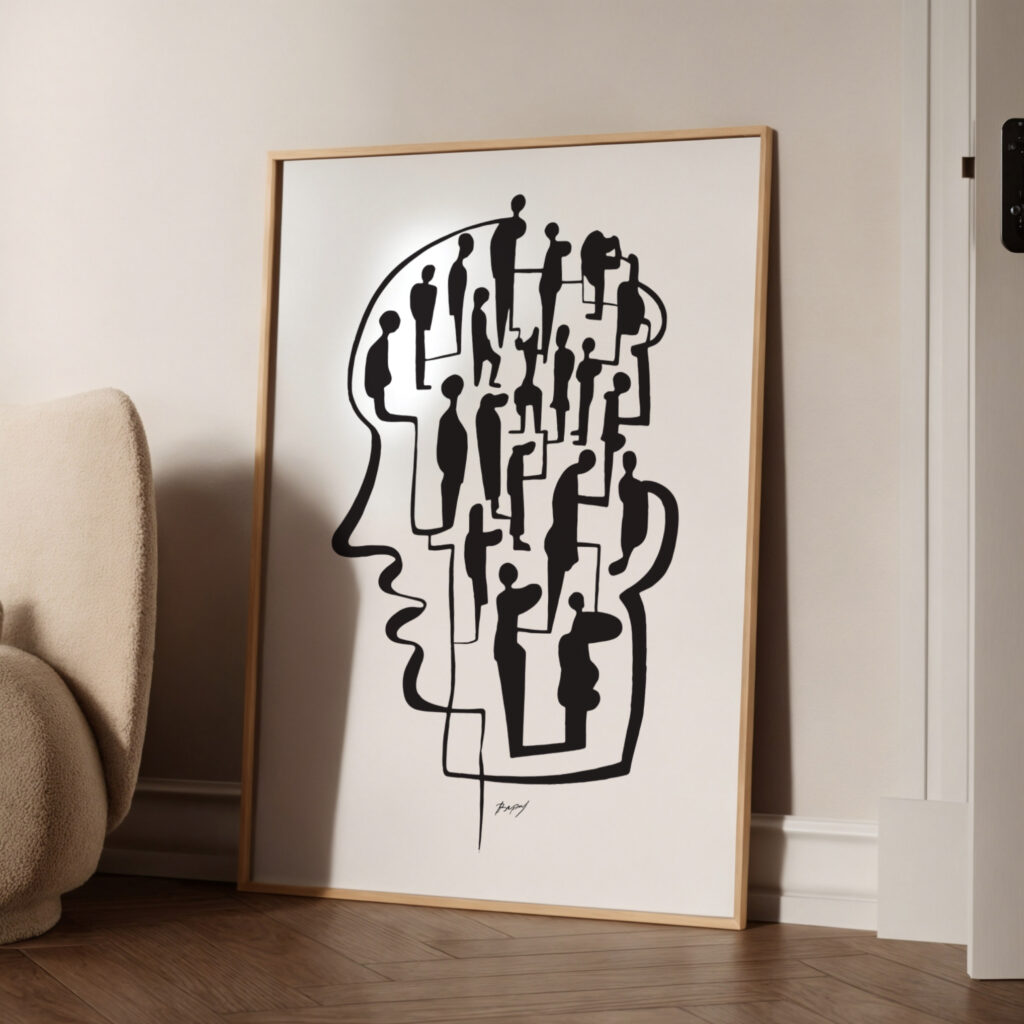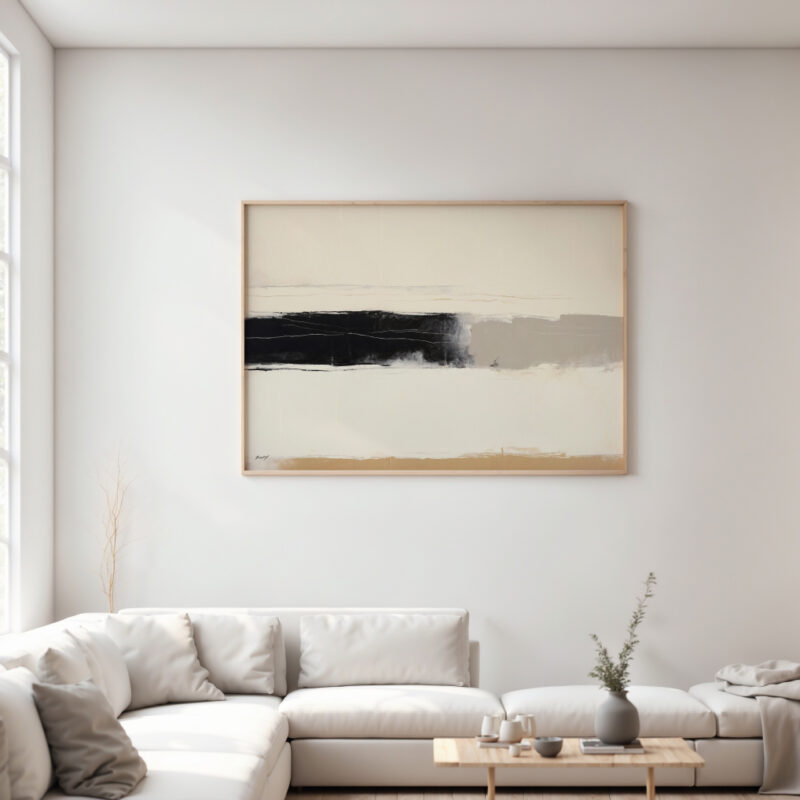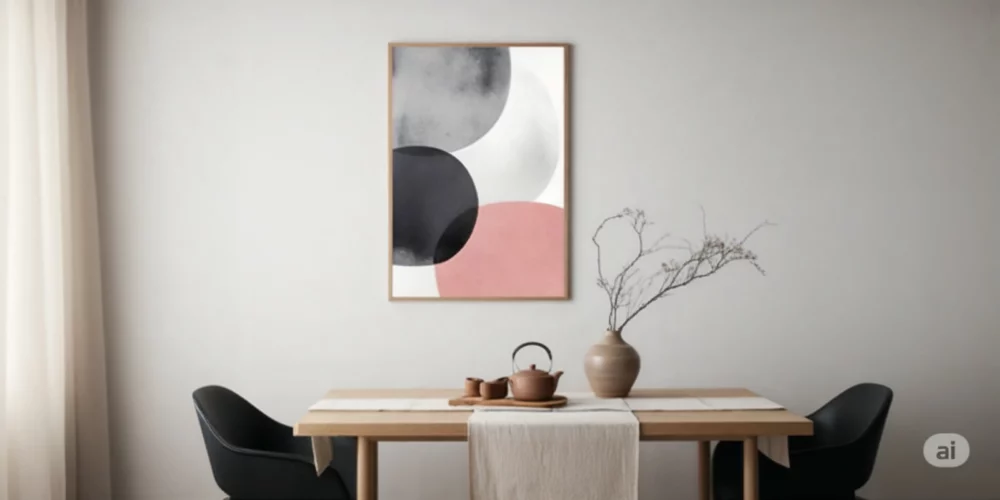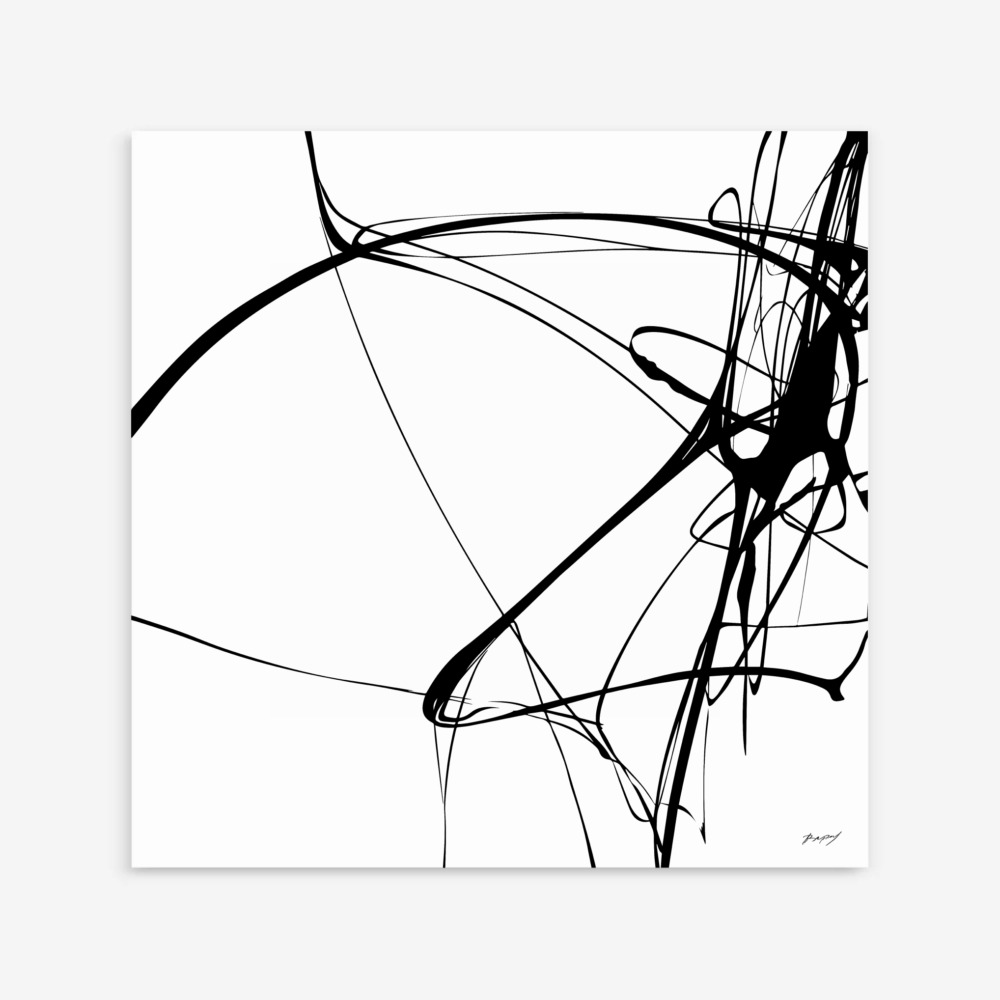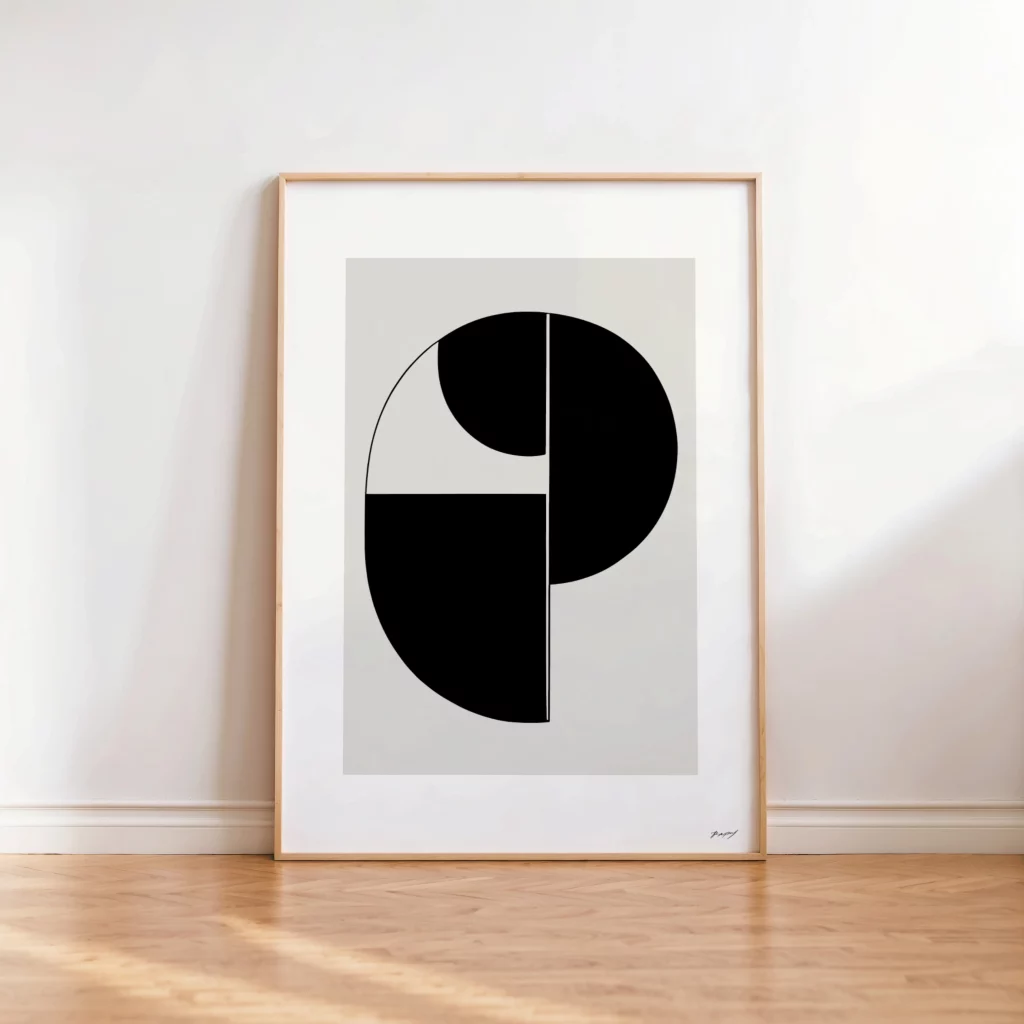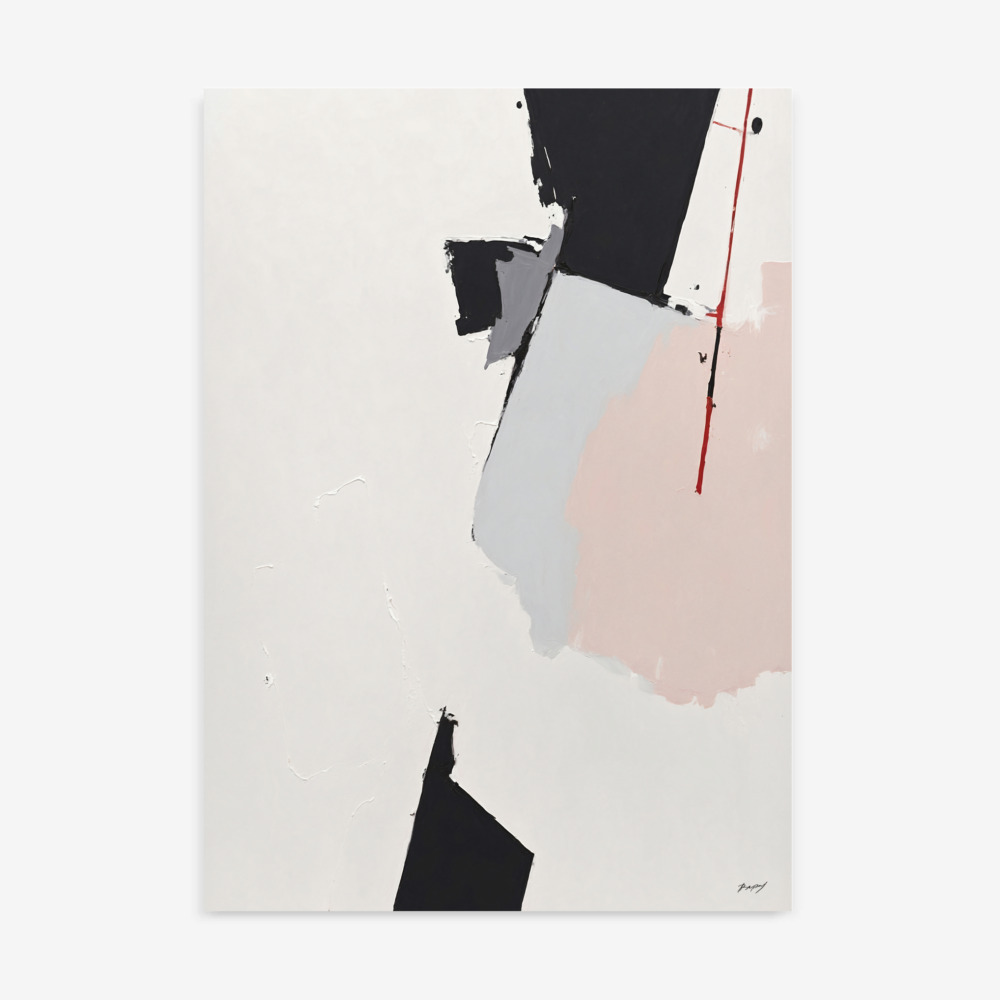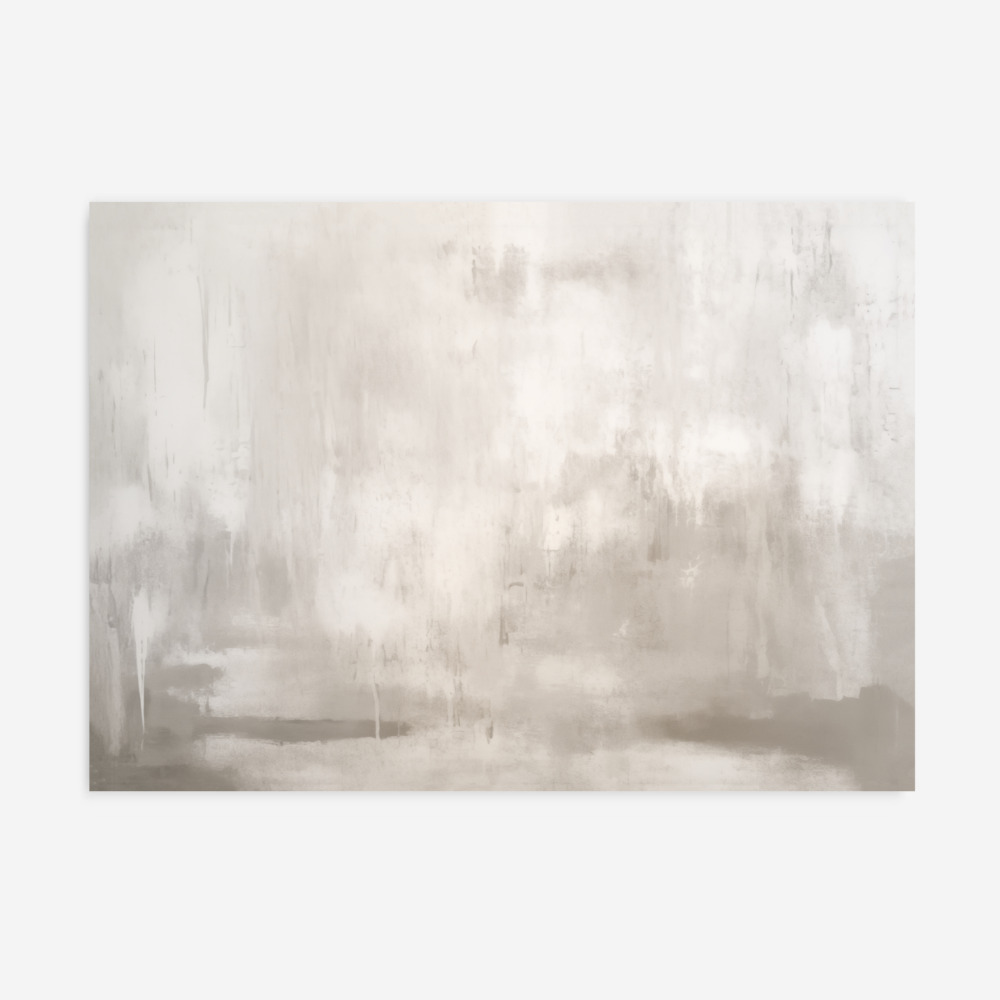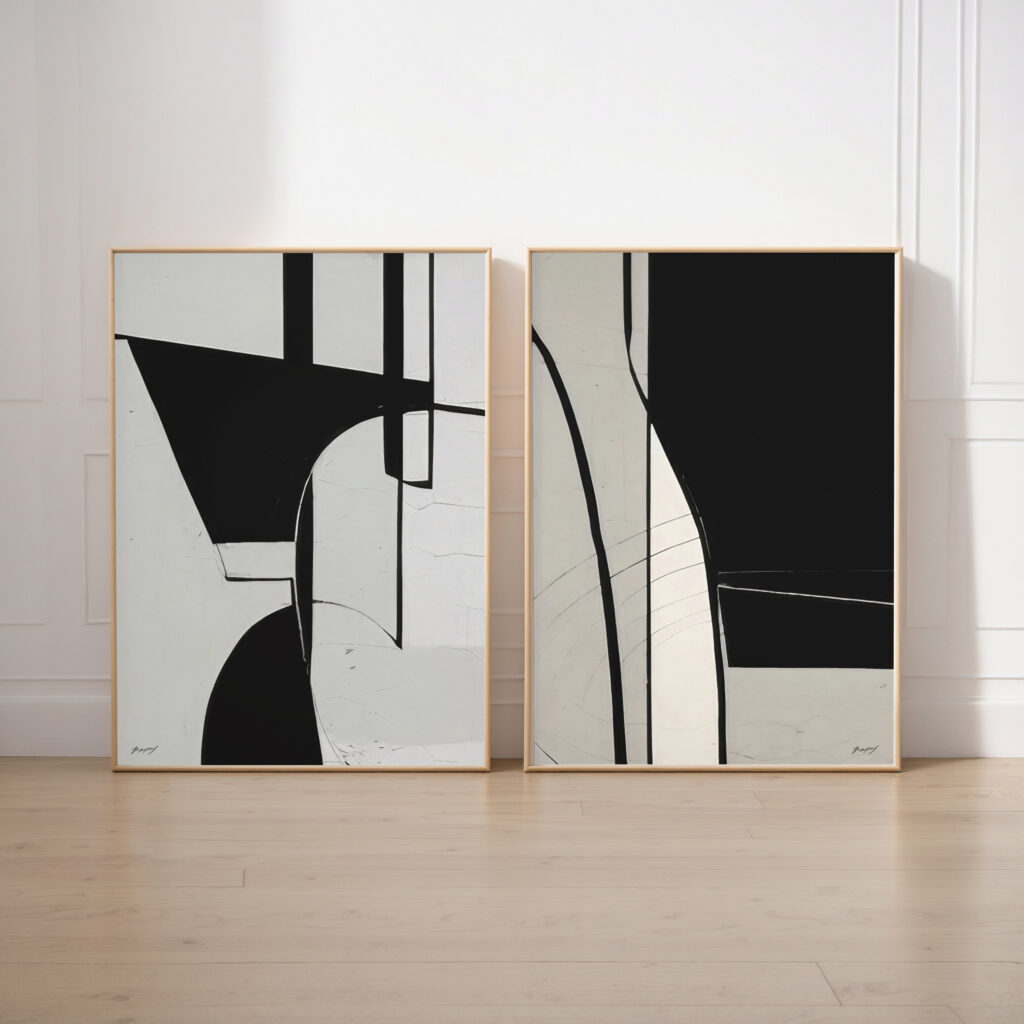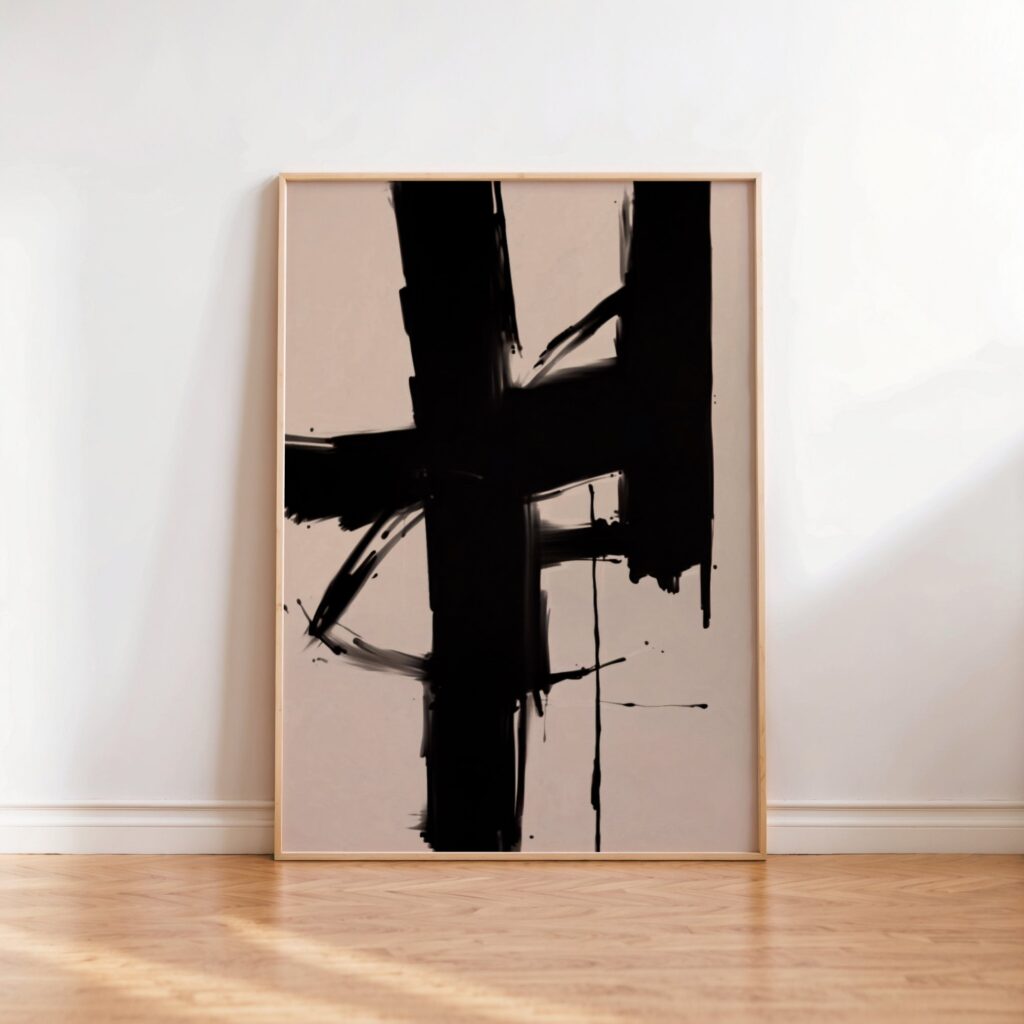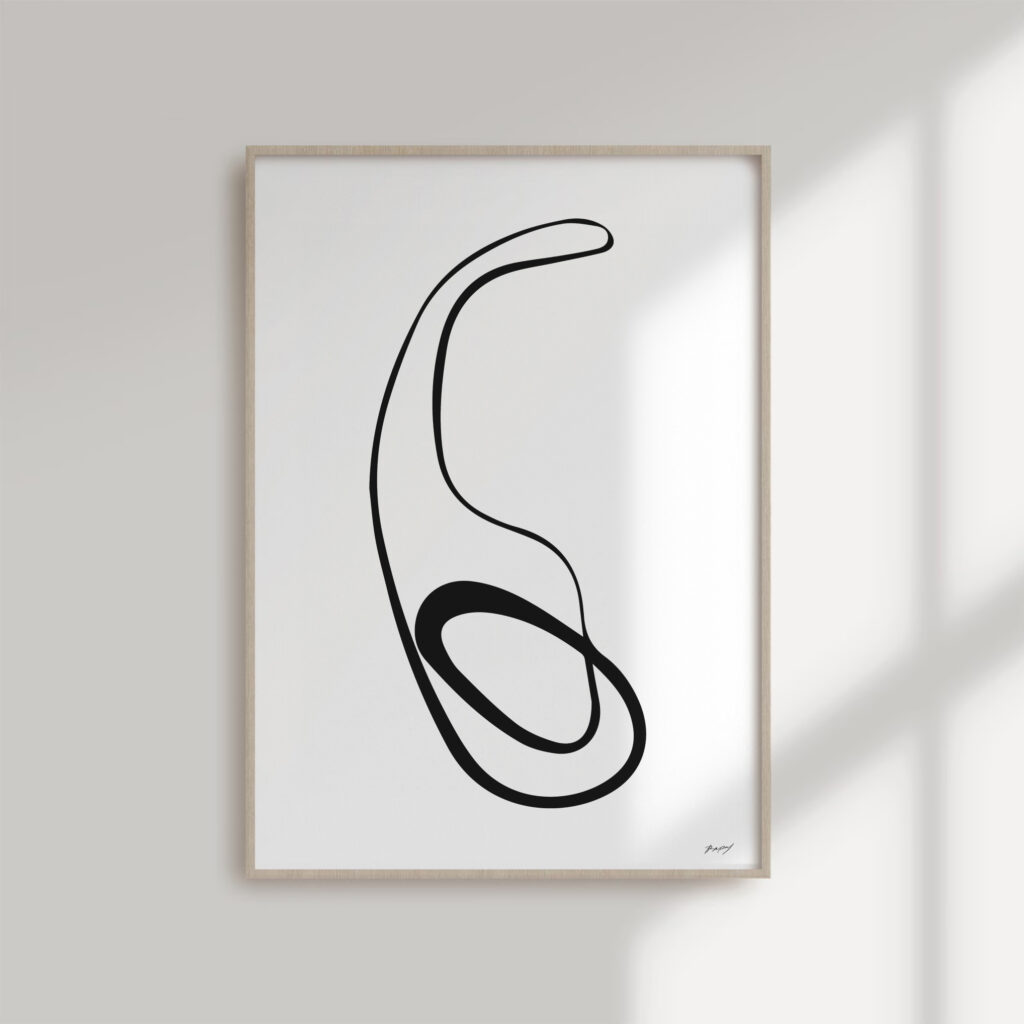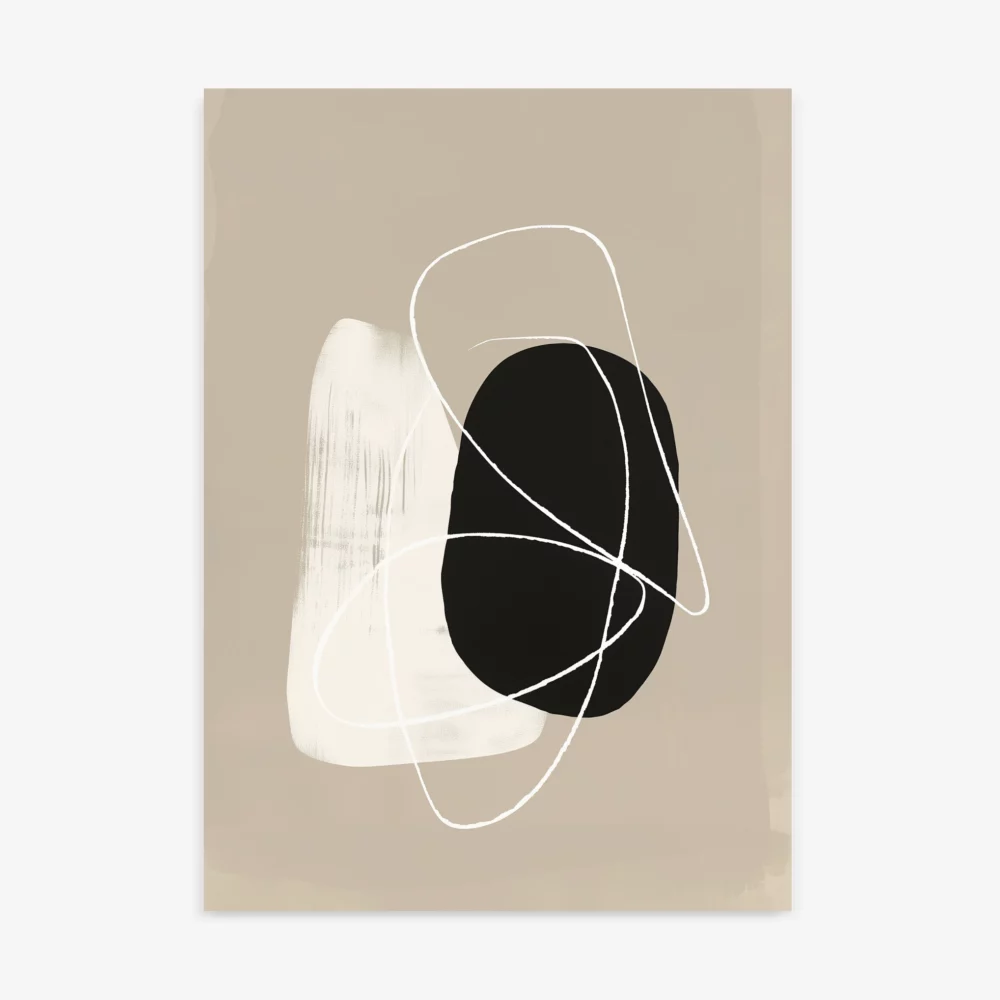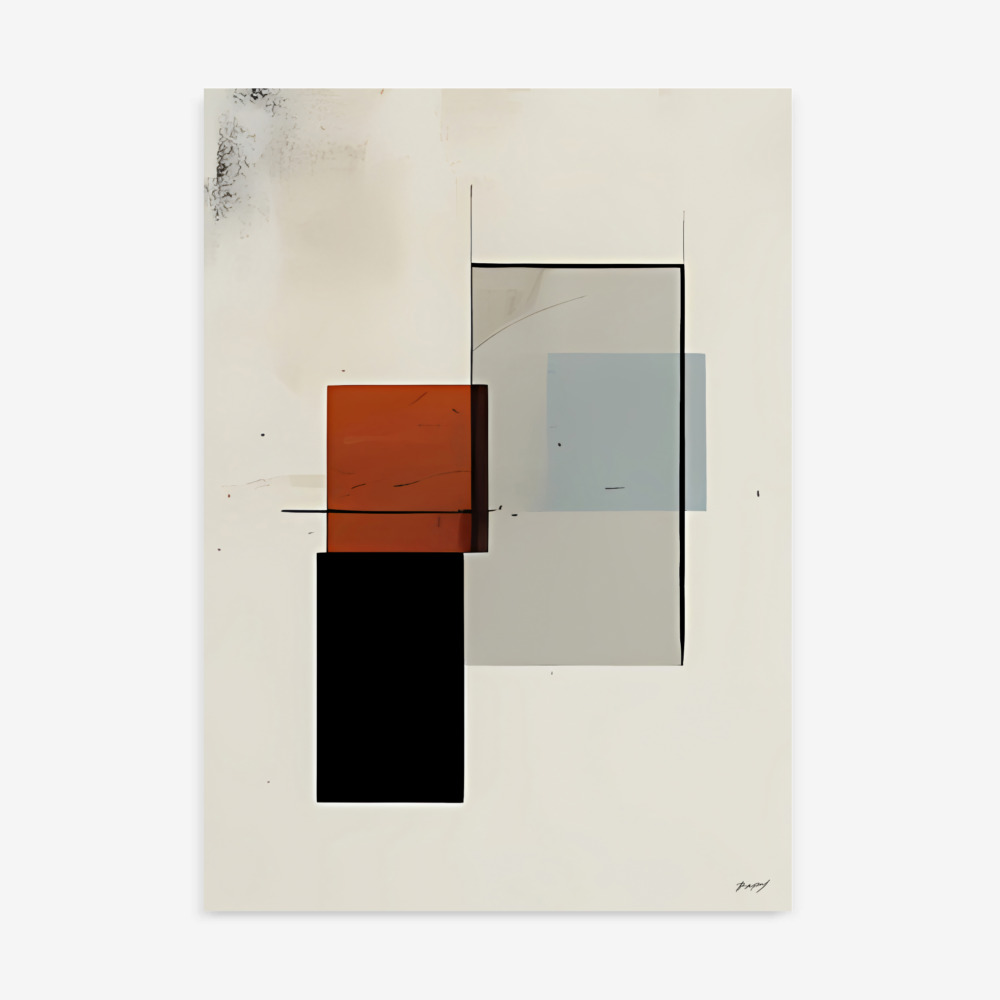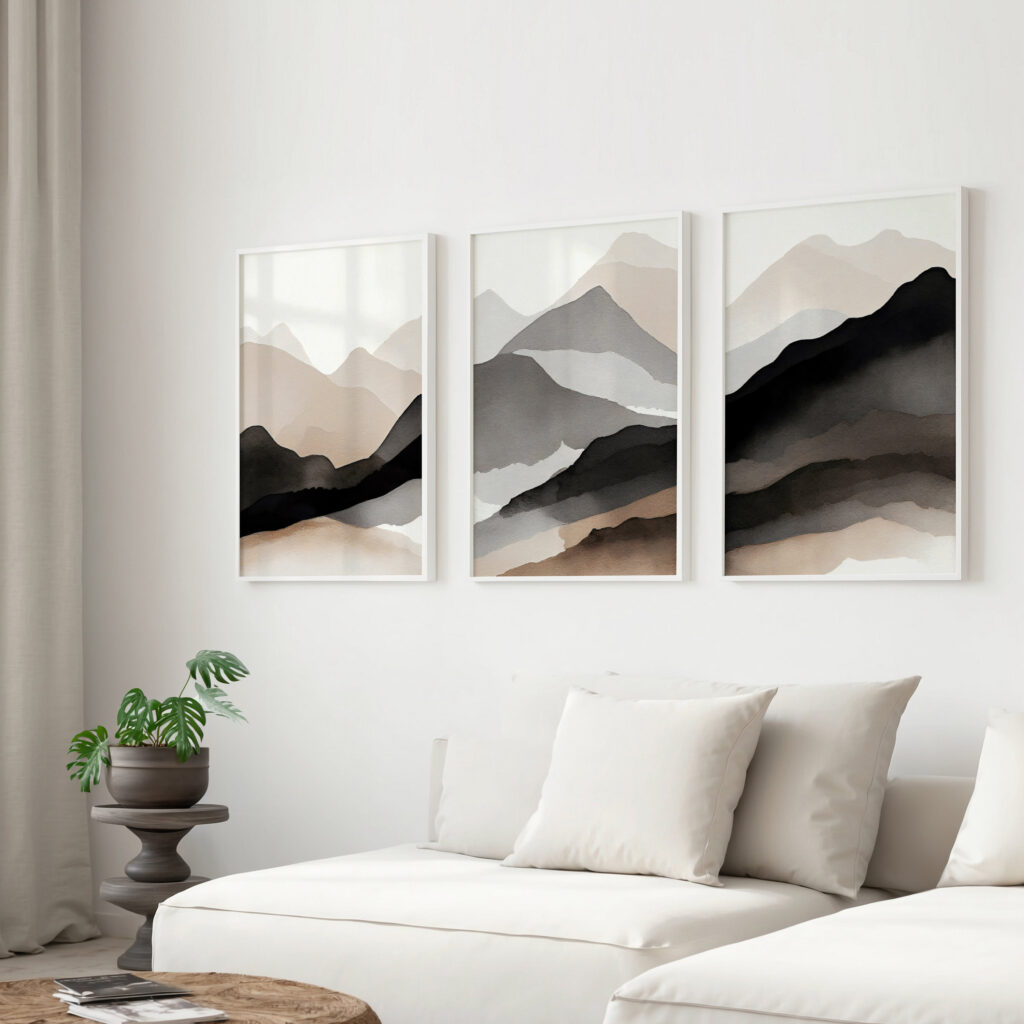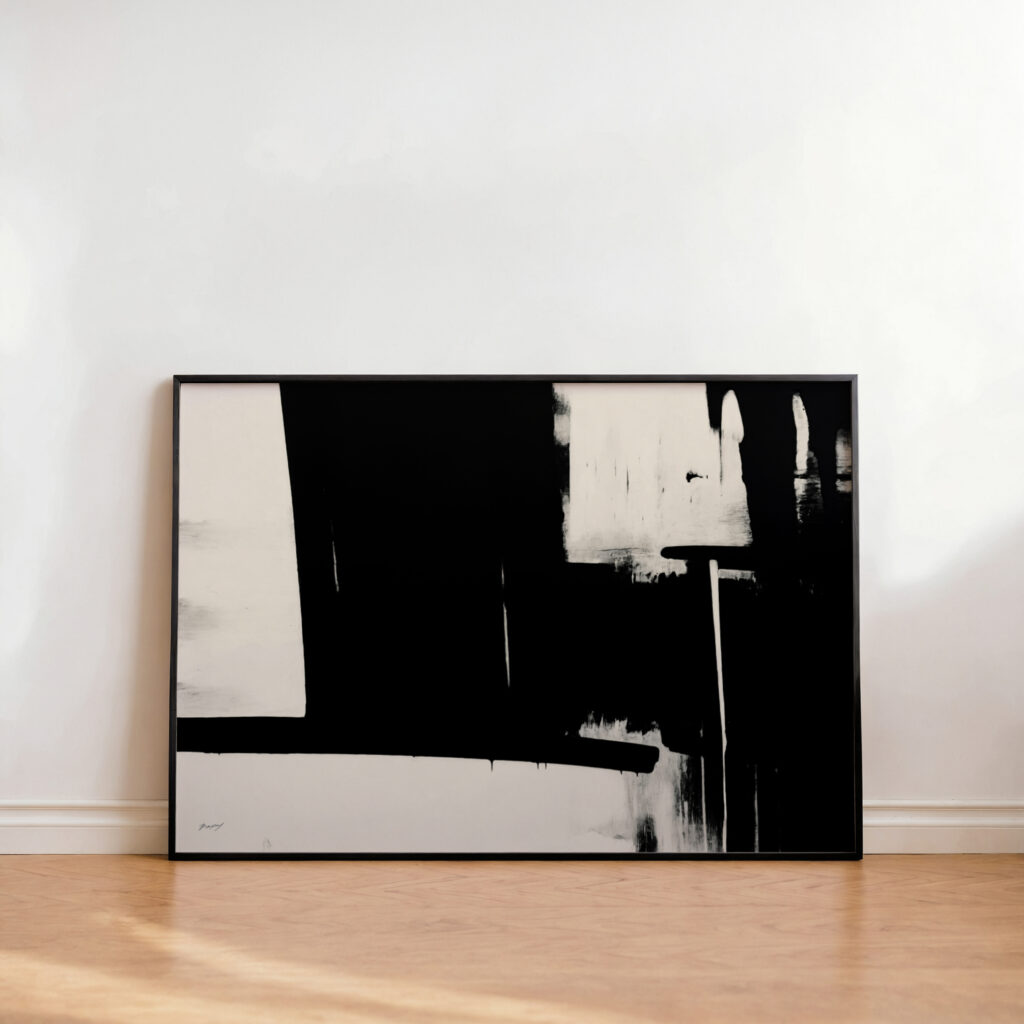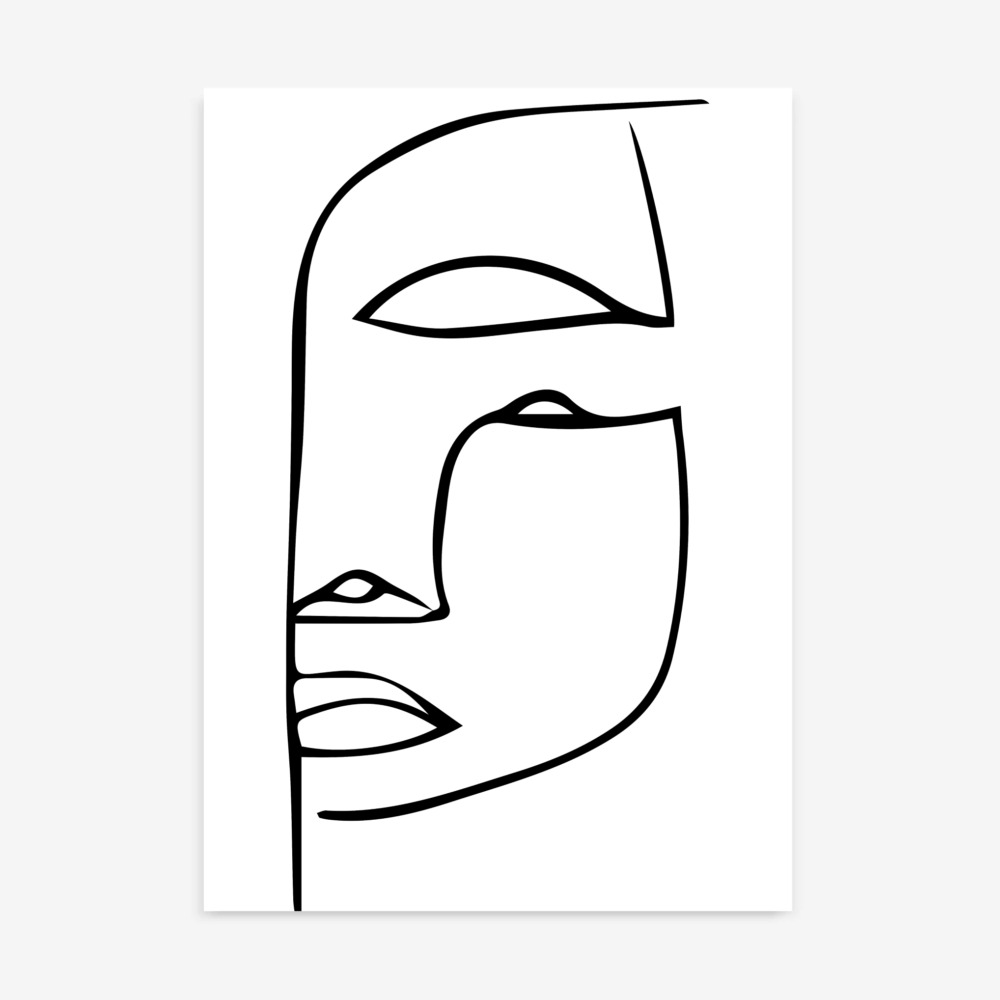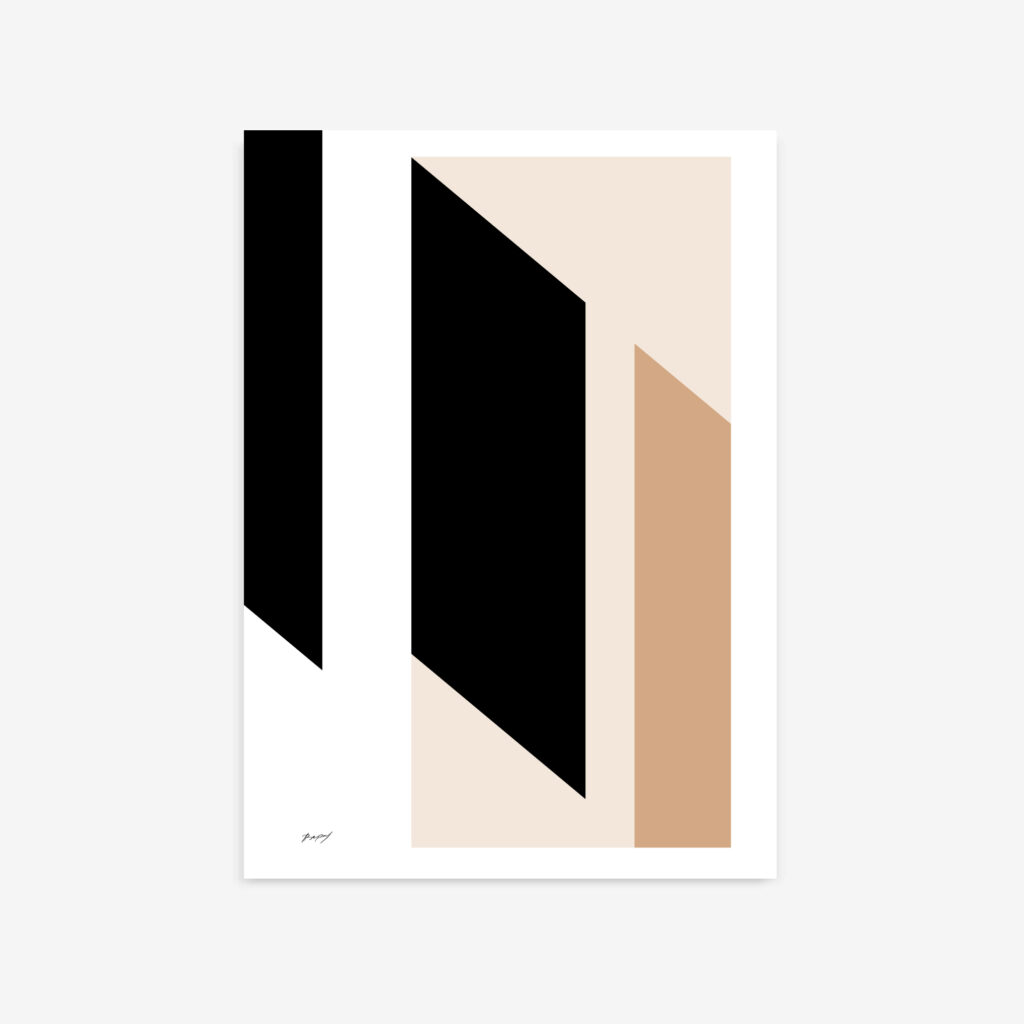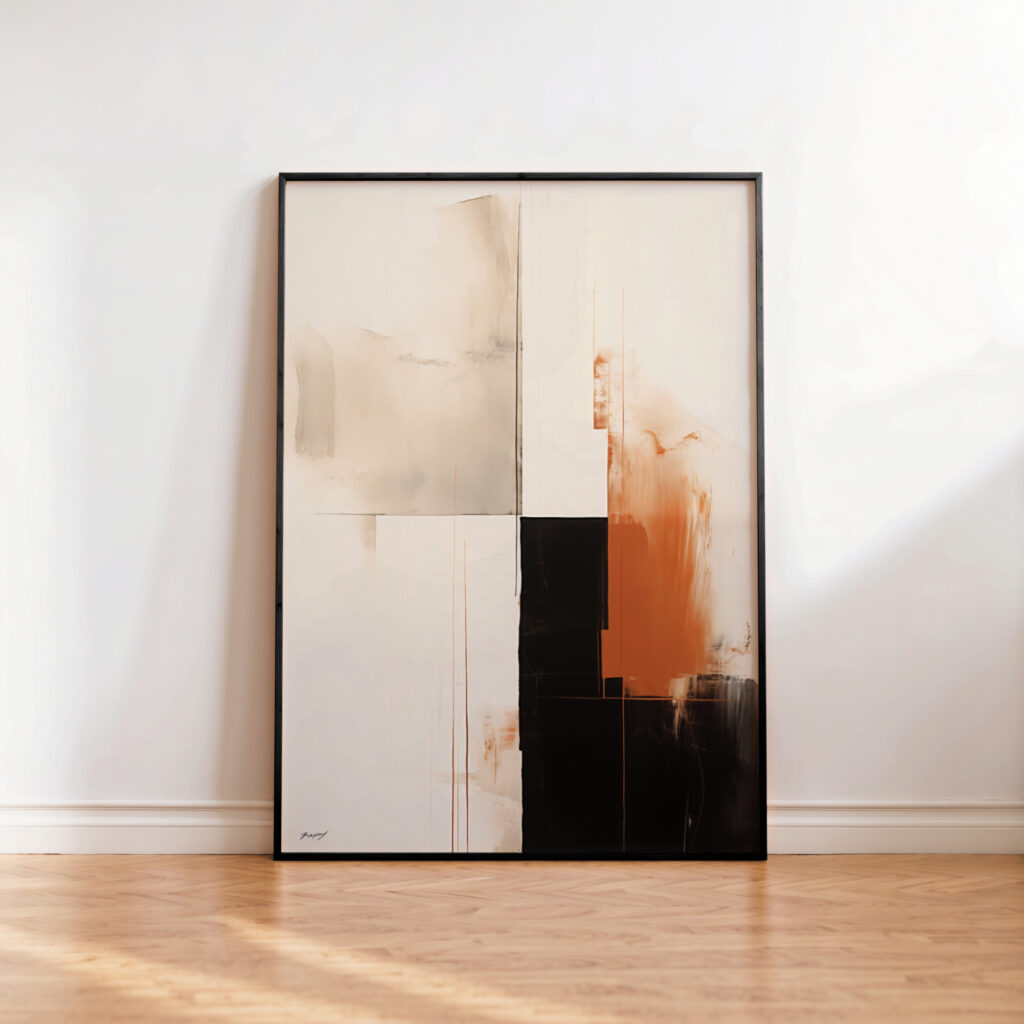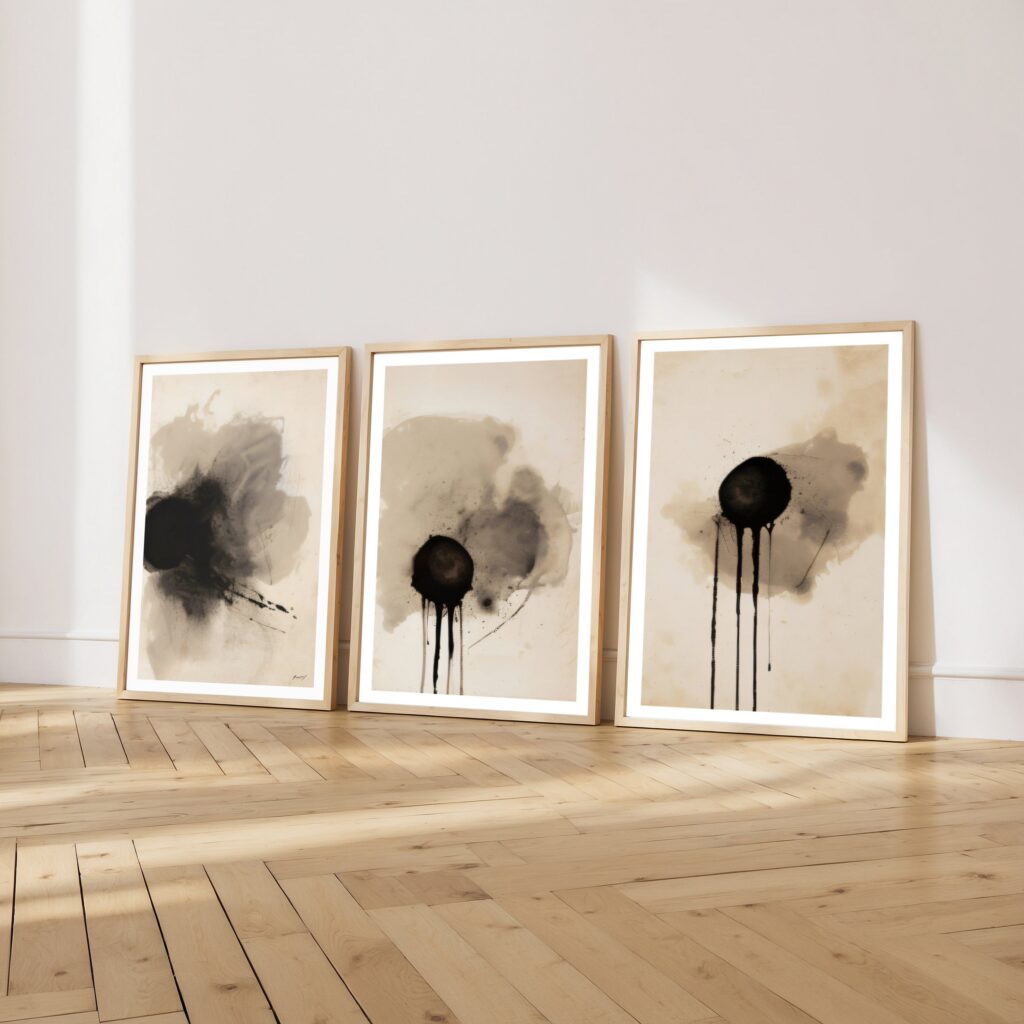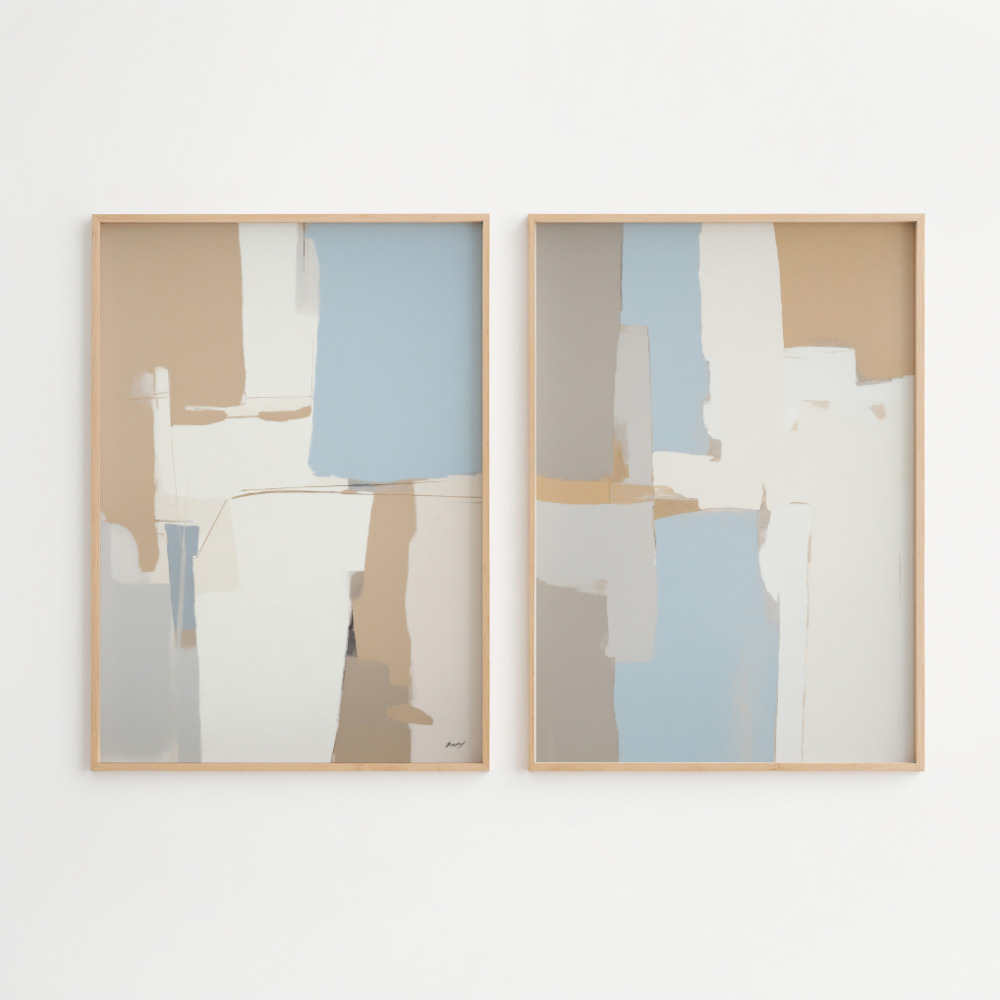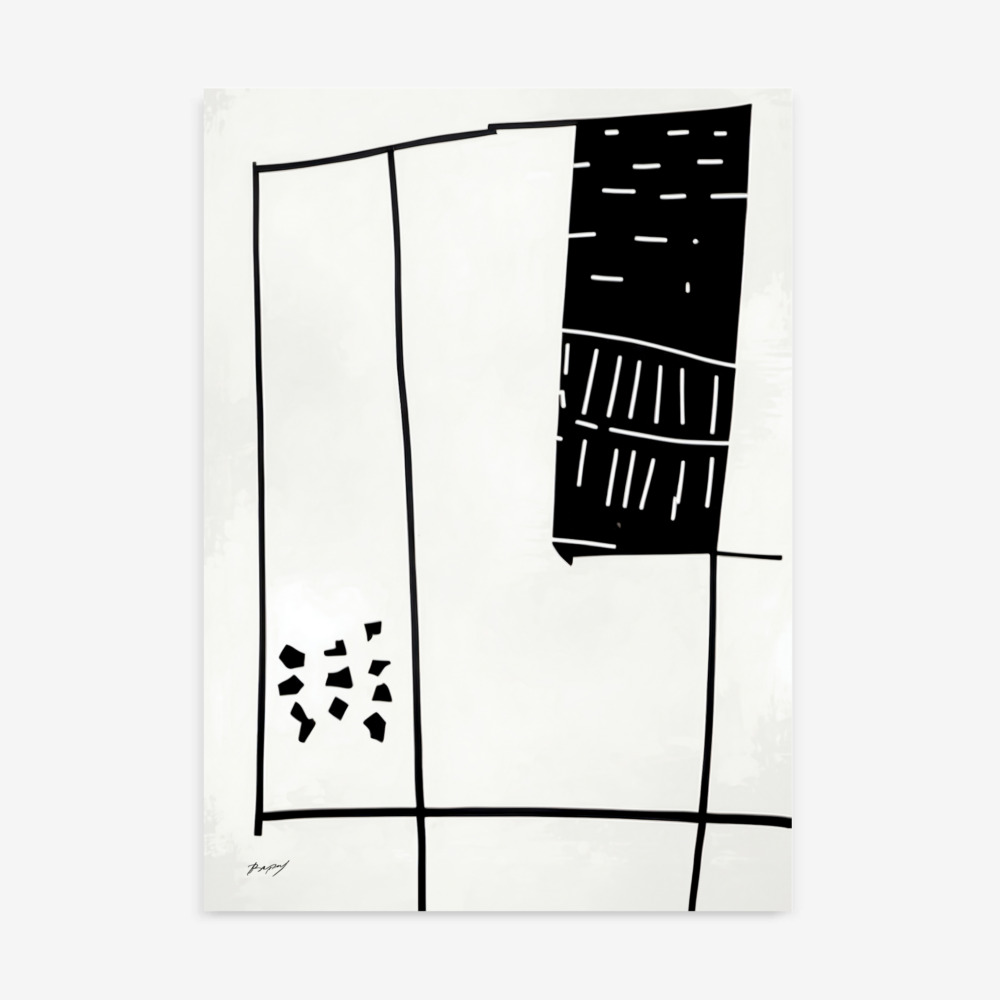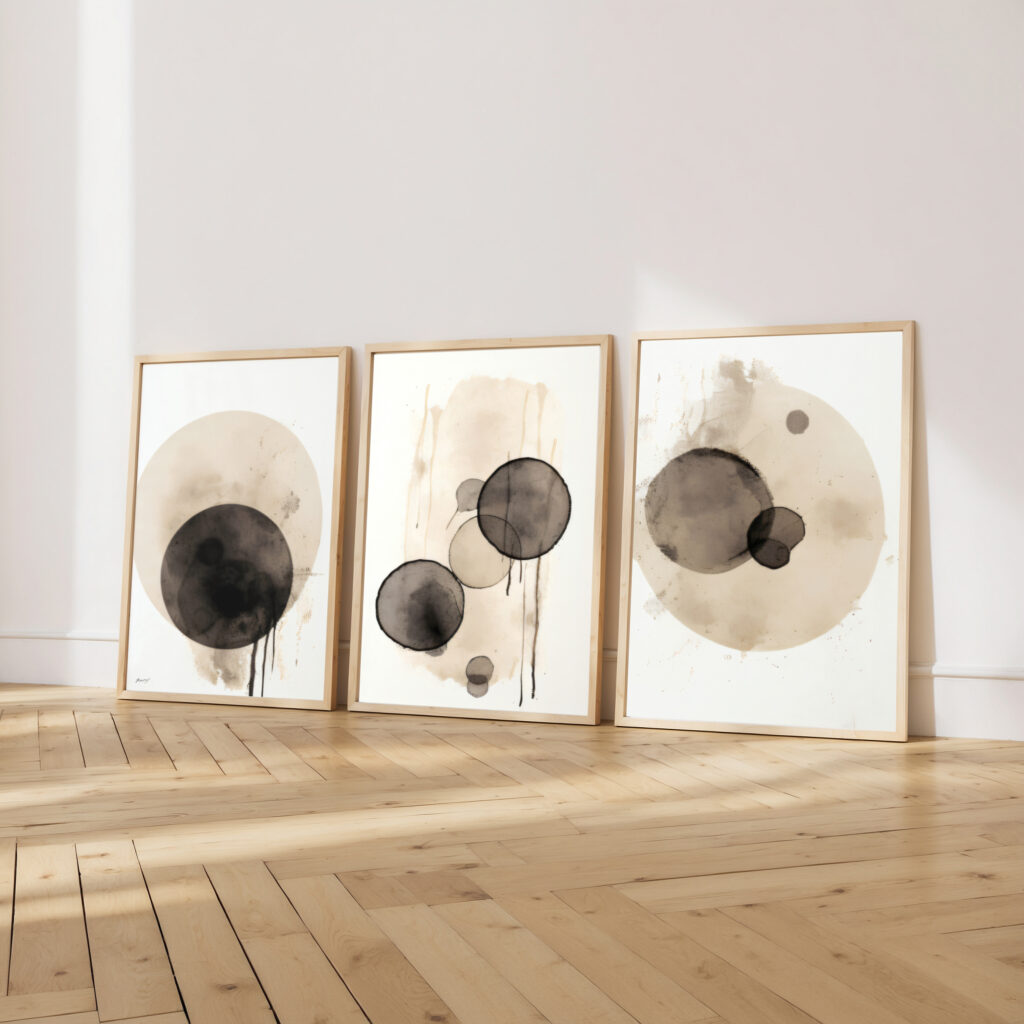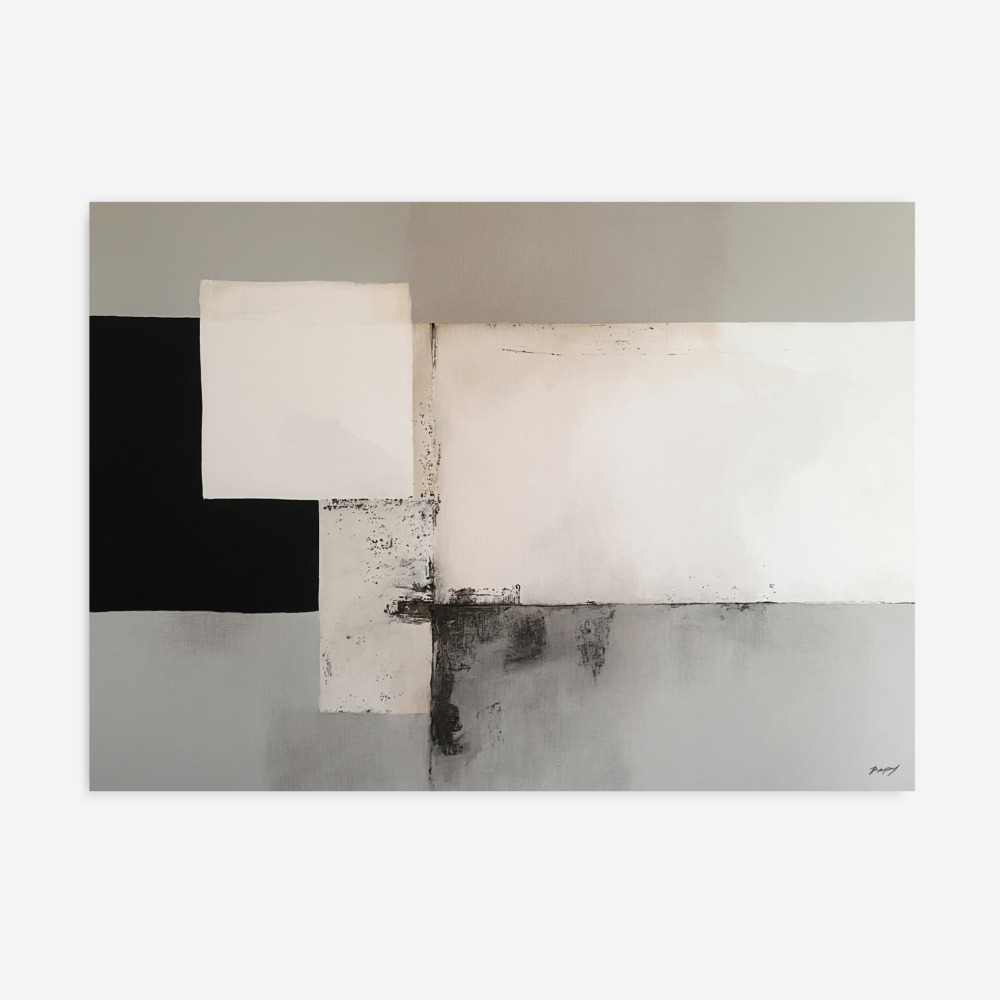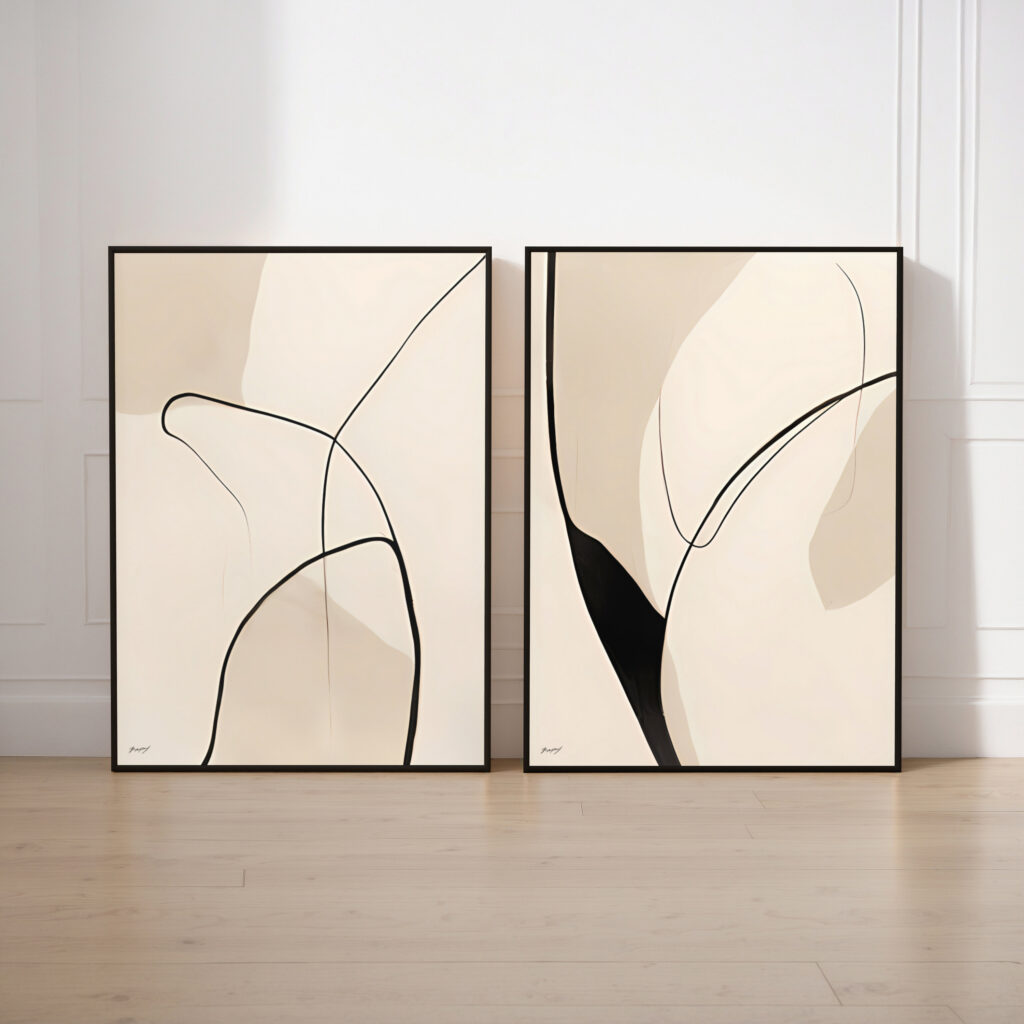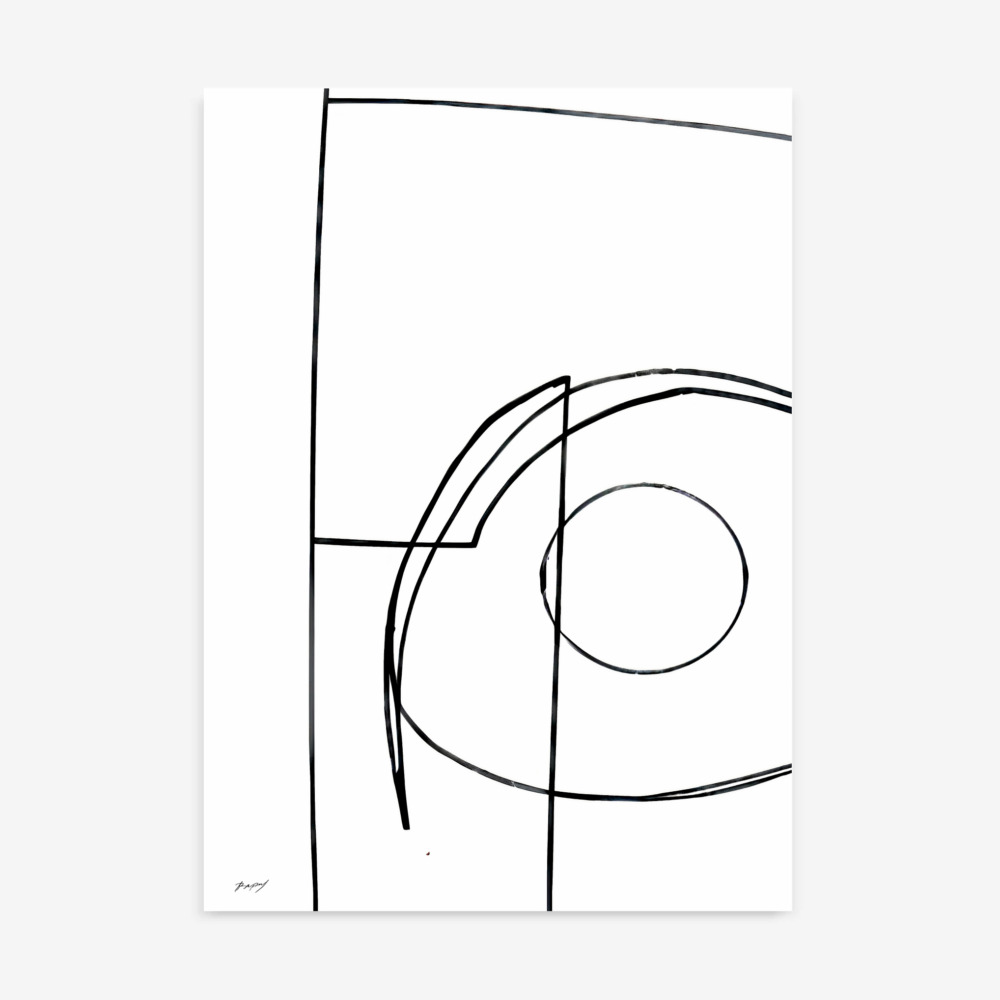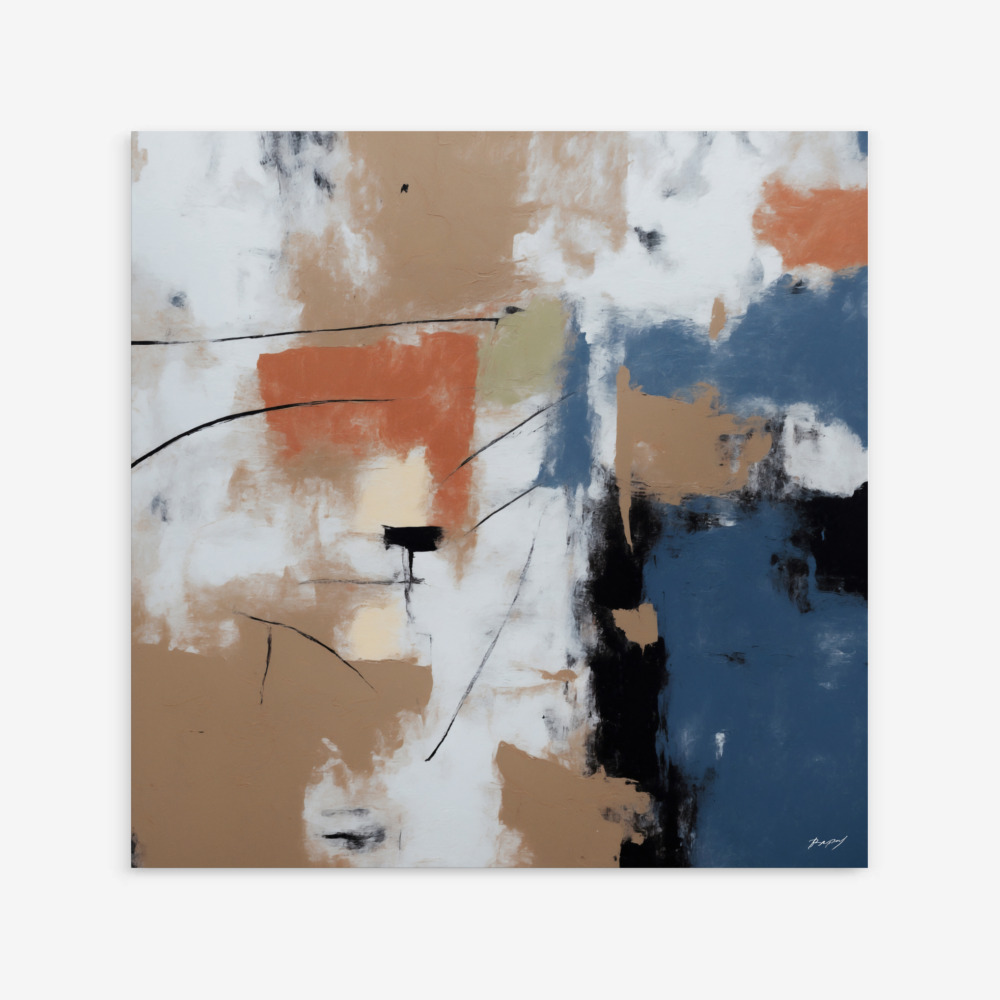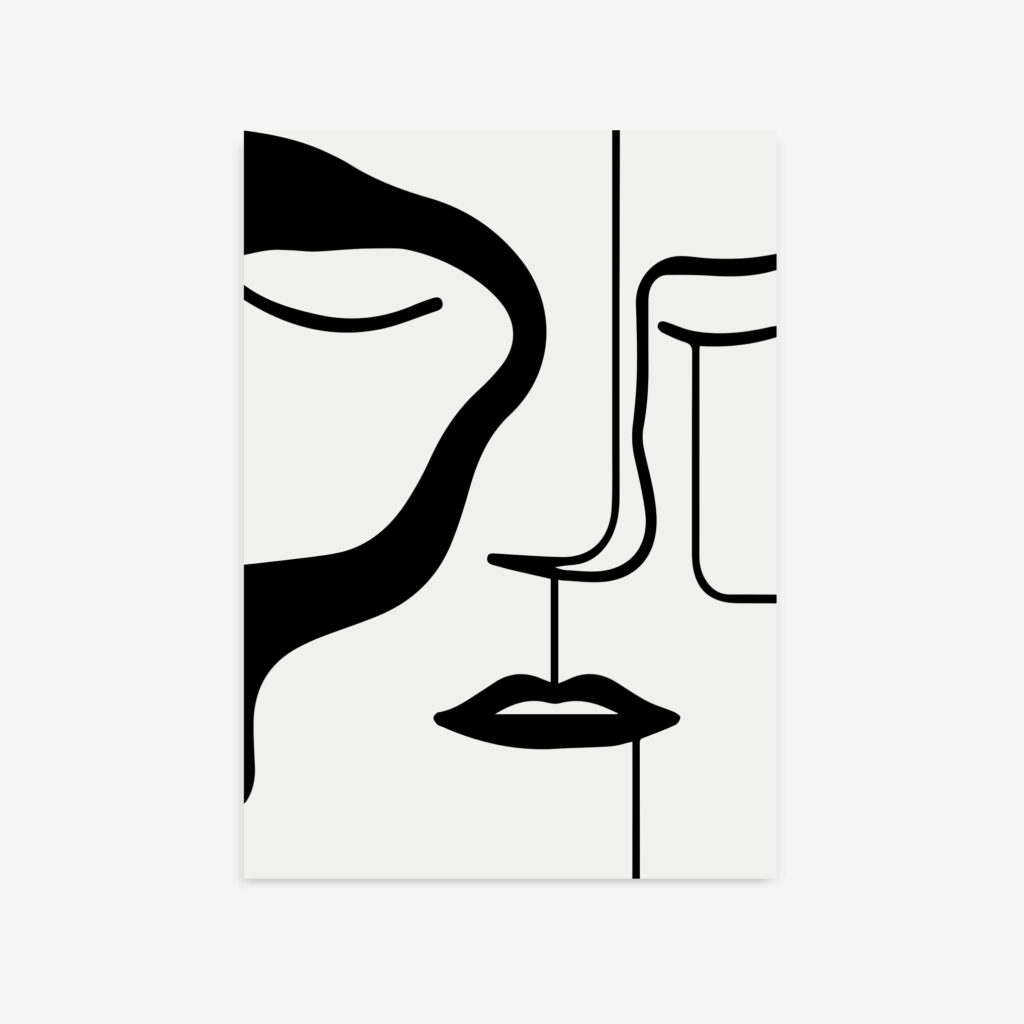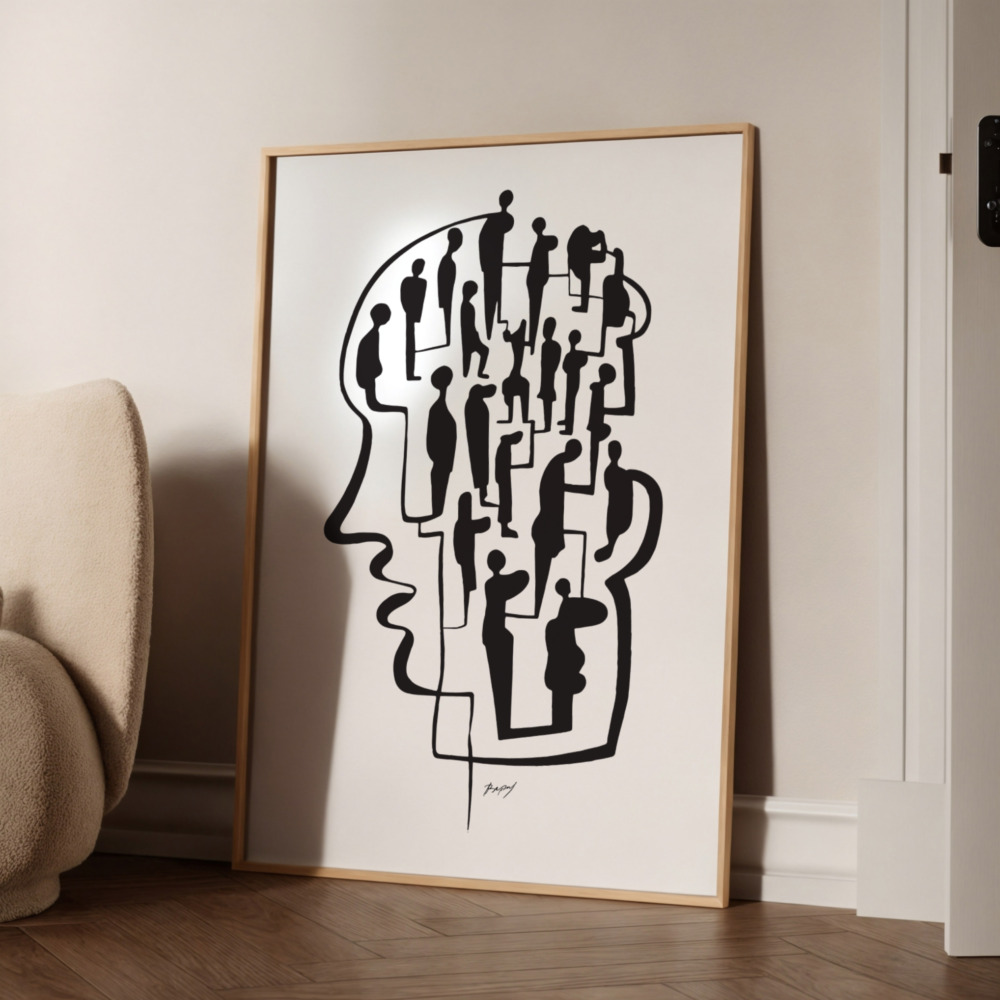In the ever-evolving world of interior design, trends come and go. Some are fleeting flashes of color and pattern, while others represent a deeper, more significant shift in how we want to live. Japandi falls firmly into the latter category. It’s more than just an aesthetic; it’s a philosophy. A beautiful, intentional fusion of two of the world’s most admired design principles: Scandinavian (specifically Nordic) and Japanese.
On the surface, these two might seem like they come from different worlds—one from the cozy, rustic comfort of the Nordic countries, the other from the serene, elegant tranquility of Japan. Yet, when they meet, they create something truly magical. They create harmonious interiors that are at once warm and sophisticated, simple and soulful, modern and timeless.
But how do you capture the essence of a philosophy on your walls? How do you visually translate this perfect blend of comfort and calm? The answer lies in the art you choose. Specifically, Japandi wall art have emerged as the quintessential element for bridging these two styles, perfectly embodying their shared values and resolving their subtle differences.
This guide will delve into the heart of the Nordic Japandi style, exploring the core tenets of both parent designs and revealing how their shared principles of simplicity, functionality, and a deep reverence for nature are perfectly expressed through the medium of art.
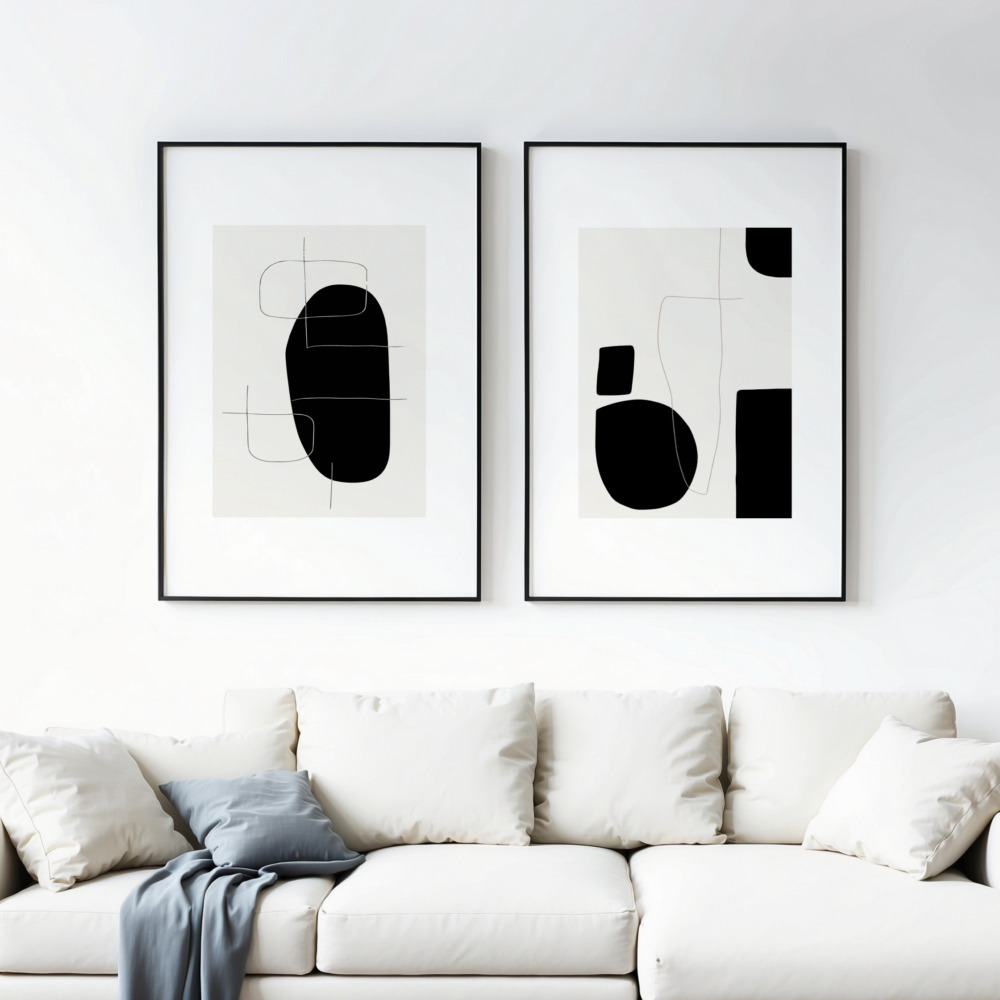
The Foundation: Understanding the Two Parent Styles
To appreciate the beauty of their union, we must first understand the individual character of each style.
The Soul of Nordic Design: Cozy, Functional, and Light
Born from the long, dark winters and stunning natural landscapes of countries like Denmark, Sweden, and Norway, Nordic design is a direct response to its environment. Its primary goal is to make home a sanctuary of light, warmth, and comfort.
The key principles include:
-
Hygge (Danish): This is the heart of Nordic living. It’s the feeling of coziness, contentment, and well-being. Think of a warm fireplace, soft woolen blankets, candlelight, and intimate gatherings. Every design choice is made with the goal of fostering this feeling.
-
Light Maximization: To combat short winter days, Nordic interiors are designed to be bright and airy. Light-colored walls (whites, soft greys, creams), large, unadorned windows, and reflective surfaces are common.
-
Functionality and Simplicity: There is no room for meaningless clutter. Every piece of furniture and decor has a purpose. Lines are clean, forms are simple, and the overall aesthetic is uncluttered and highly practical.
-
Natural, Rustic Materials: Light-toned woods like pine, ash, and birch are heavily featured, alongside natural textiles like wool, linen, and leather. These materials add a layer of rustic warmth and texture, connecting the home to the surrounding forests.
The overall feeling of a Nordic interior is inviting, relaxed, and effortlessly comfortable. It is simple without being stark, and cozy without being cluttered.
The Soul of Japanese Design: Serene, Mindful, and Elegant
Rooted in centuries of tradition and Zen Buddhist philosophy, Japanese design is an exercise in mindfulness, tranquility, and finding beauty in the essential.
The key principles include:
-
Wabi-Sabi (Japanese): This is the core worldview. It’s the art of finding beauty in imperfection, impermanence, and incompleteness. It celebrates the natural aging of materials (like weathered wood or tarnished metal), asymmetry, and the authenticity of handcrafted objects.
-
Tranquility and Order: Japanese interiors are designed to be serene spaces for contemplation and peace. This is achieved through extreme decluttering, organized storage, and a layout that promotes a sense of flow and calm.
-
Deep Connection to Nature (Shizen): Nature is not just an influence; it’s an integral part of the home. This is expressed through the use of natural materials like bamboo, cedar, and stone, as well as the inclusion of indoor plants (like bonsai) and views of a garden.
-
Rich, Earthy Palette and Darker Woods: While still minimalist, the Japanese palette can be richer and more contrasting than the Nordic one. It often incorporates deep, earthy tones and makes use of darker, stained woods like cypress and red pine, often paired with sleek black elements.
The overall feeling of a Japanese interior is one of elegant simplicity, profound serenity, and mindful intention.

The Perfect Union: What Makes Japandi So Harmonious?
When you lay the principles of Nordic and Japanese design side-by-side, their synergy becomes incredibly clear. Japandi isn’t a forced pairing; it’s a natural convergence of shared values.
Shared DNA:
-
Minimalism: Both styles fundamentally reject clutter and ornamentation in favor of clean, simple spaces.
-
Functionality: They share the belief that objects should be both beautiful and useful.
-
Craftsmanship: There is a mutual respect for well-made, durable items created with care.
-
Reverence for Nature: This is the most profound connection. Both cultures see the home as a place to connect with the natural world.
Complementary Differences:
This is where the true magic lies. The differences between the two styles don’t clash; they balance each other out perfectly.
-
The rustic coziness and light woods of Nordic design prevent the sleek elegance of Japanese design from feeling too formal or cold.
-
The rich color palette and sophisticated imperfection (Wabi-Sabi) of Japanese design prevent the simplicity of Nordic design from feeling too plain or spartan.
Japandi takes the best of both worlds: the cozy, lived-in comfort of Nordic Hygge and the serene, elegant mindfulness of Japanese Wabi-Sabi. The result is a harmonious interior that feels both grounded and light, sophisticated and inviting. It’s the ultimate balanced space for modern living.
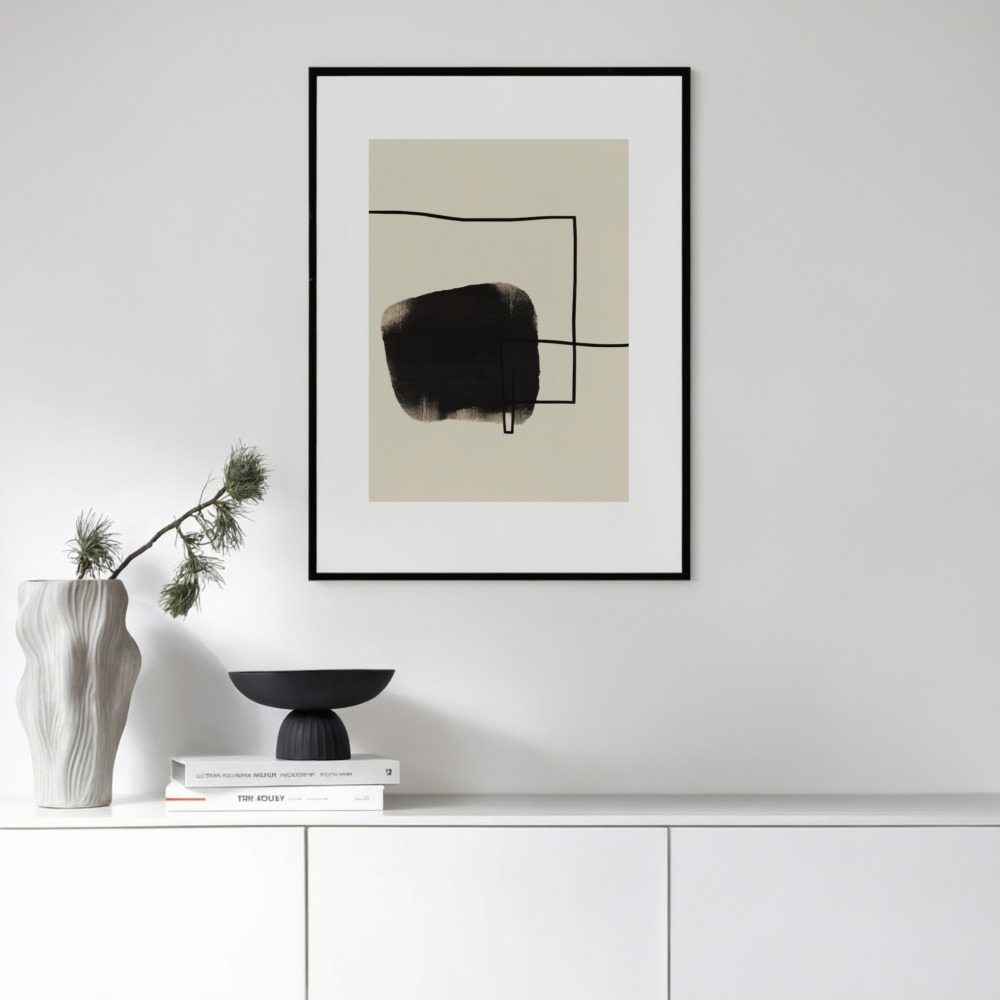
The Visual Bridge: How Japandi Wall Art Embody the Ethos
While furniture and textiles lay the groundwork, it is the art on the walls that truly solidifies the Nordic Japandi style. Art is the soul of a room, and Japandi art prints are specifically created or curated to speak this unique visual language. Here’s how they do it.
1. A Unified Palette: The Colors of Calm
Japandi art doesn’t strictly adhere to one palette; it masterfully blends the two. It takes the light, airy neutrals of Scandinavia and deepens them with the earthy, rich tones of Japan.
-
Earthy Neutrals: You’ll find prints dominated by soft beige, warm greige, stone grey, and creamy off-whites. These colors create a calming, neutral backdrop that feels both light (Nordic) and grounded (Japanese).
-
Accents of Nature: The accent colors are drawn directly from the natural world. Think of the deep, mossy green of a forest floor, the muted ochre of clay, the rich charcoal of burnt wood (shou sugi ban), and the inky indigo of traditional Japanese dyes.
-
Subtle Contrast: A classic Japandi print might feature a simple black form against a warm beige background. This combines the Japanese love for stark, graphic contrast with the warm, inviting undertones of the Nordic aesthetic. This subtle tension is visually captivating.
This blended palette ensures that the art can tie together a room that features both light oak furniture and black accent pieces, creating the cohesive look that defines Japanese Scandinavian decor.
2. Subjects of Serenity: Nature, Simplicity, and Form
The subject matter of Japandi art is a direct reflection of the philosophy’s core tenets. It is always calming, always connected to nature, and always elegantly simple.
-
Minimalist Landscapes: A print might depict a misty Nordic fjord, but rendered with the simplicity and negative space of a Japanese ink wash painting. Or it might show a single, elegant bamboo stalk, a subject beloved in Japan, but set against a soft, textured Nordic-style background. These landscapes are less about a specific place and more about evoking a feeling of peace and solitude.
-
Organic Botanicals: This is a major theme. You will see prints of a single, gnarled branch (celebrating Wabi-Sabi), a delicate sprig of pampas grass, a minimalist rendering of a Ginkgo leaf, or the soft silhouette of wildflowers. The focus is on the simple, organic beauty of the form itself.
-
Abstracts Inspired by Texture: Many Japandi abstracts are not about pure color or emotion, but about texture and form found in nature. Think of prints that evoke the grain of wood, the rough surface of stone, the gentle ripples on water, or the crackled glaze on handmade pottery. These pieces add a layer of tactile visual interest that is deeply satisfying.
-
Elegant Line Art: Simple, continuous line drawings of faces, figures, or natural objects are incredibly popular. They embody the minimalist spirit of both cultures and add a touch of humanistic, artistic elegance without creating visual noise.
3. Wabi-Sabi in Print Form: The Beauty of Imperfection
This is what elevates Japandi art beyond simple minimalism. The Japanese concept of Wabi-Sabi is actively celebrated in the art itself, adding a layer of soul and authenticity. Look for prints that feature:
-
Asymmetrical Compositions: Instead of a perfectly centered subject, a Japandi print will often place the main element off to one side, creating a more dynamic and natural-feeling balance. This asymmetry is a core principle of Japanese aesthetics.
-
Visible Brush Strokes and Ink Washes: Art that looks handmade is highly valued. Prints that replicate the texture of a real brushstroke or the subtle bleeding of an ink wash (sumi-e style) celebrate the hand of the artist and the beauty of the creative process.
-
Rough, Textured Backgrounds: Many prints feature backgrounds that look like handmade paper, rough plaster, or woven linen. This adds a tactile quality and a sense of age and history to the piece.
-
Kintsugi-Inspired Designs: Kintsugi is the Japanese art of repairing broken pottery with gold lacquer, highlighting the cracks as part of the object’s history. Some modern Japandi prints incorporate this idea, with elegant gold lines running through abstract shapes, celebrating the beauty found in repair and imperfection.
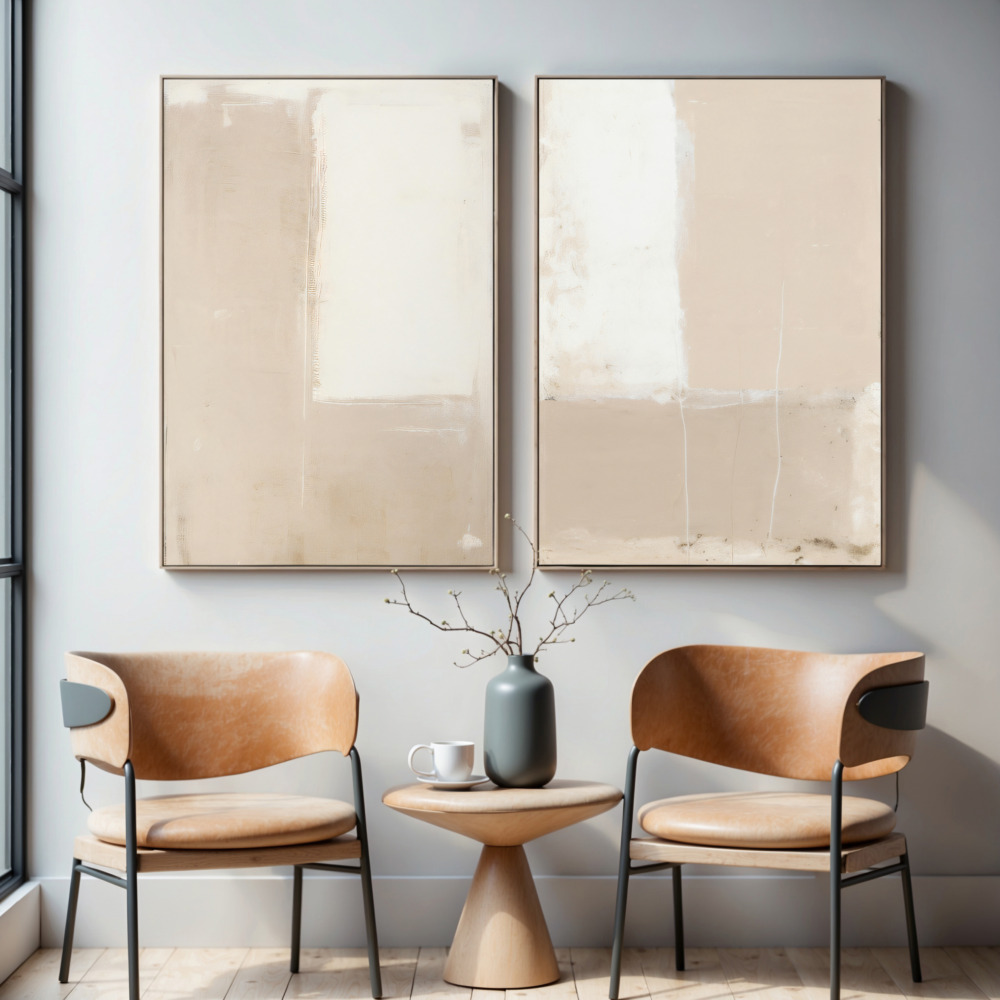
Practical Curation: Creating Your Harmonious Japandi Interior with Art
Bringing the Nordic Japandi style into your home is an exercise in mindful curation. Here are some practical tips for using art to achieve that perfect balance.
-
Choose a Statement Piece to Anchor the Room: Select one large Japandi art print to be the focal point. A piece that features a minimalist landscape or a large-scale abstract with earthy tones can set the entire mood for a living room or bedroom. It acts as the “thesis statement” for your design.
-
Create an Asymmetrical Gallery Wall: This is the perfect way to express Wabi-Sabi. Ditch the perfectly aligned grid. Instead, create a balanced but asymmetrical cluster of prints.
-
Mix Frames: Use a combination of natural light oak frames (Nordic) and thin black or dark wood frames (Japanese).
-
Vary Sizes and Orientations: Combine a large vertical print with a few smaller square and horizontal pieces.
-
Unite with a Theme: Keep the collection cohesive by choosing prints with a similar color palette or a shared theme, like botanicals or abstract textures.
-
The Power of the Diptych: Hang two complementary prints side-by-side. This could be two halves of a single image or two different abstracts that share the same colors and style. This creates a sense of balance and rhythm that is very calming and intentional.
-
Mindful Placement: Japandi is about creating intentional moments of peace. Place a small, serene art print in a reading nook, at the end of a hallway, or in your entryway. This creates a small vignette for quiet contemplation as you go about your day.
-
Lean, Don’t Hang: For a relaxed, informal feel, lean a couple of framed prints on a sideboard, mantel, or picture ledge. This feels less rigid and allows you to easily move and rearrange your art, reflecting the impermanent nature celebrated in Wabi-Sabi.
The Art of Accessible Harmony
A core principle shared by both Japanese and Nordic design is that beauty and peace should not be exclusive luxuries. They should be integrated into daily life. Thankfully, achieving the sophisticated Japandi art look is more accessible than ever. The proliferation of online art print stores means you can find high-quality, beautifully curated collections without the fine art price tag.
Shops that specialize in these aesthetics, like our own Print Studio, offer an easy way to explore and purchase pieces that perfectly capture the Japandi spirit. This accessibility allows you to thoughtfully build a collection that tells your personal story and creates a truly harmonious interior.
Conclusion: More Than a Trend, A Way of Life
Japandi is resonating so deeply with people because it speaks to a collective desire for a simpler, more mindful, and more meaningful way of living. It’s about creating a home that is not just a backdrop for our lives, but a genuine sanctuary that supports our well-being.
In this beautiful fusion, Japandi art play a starring role. They are the visual storytellers of this philosophy. They capture the cozy comfort of Hygge and the elegant tranquility of Wabi-Sabi. They celebrate nature, embrace imperfection, and find profound beauty in simplicity.
By carefully selecting art that embodies these principles, you are doing more than just decorating. You are infusing your walls with a sense of peace, balance, and harmony that will resonate throughout your entire home. You are curating a space that is not only stylishly modern but also deeply and restoratively human.
Ready to bring Japandi harmony into your space? Explore our curated collection of Japandi-inspired art prints at Print Studio and discover the beauty of simplicity in every detail.

